Sourdough bread is a better choice for many people when compared to regular white bread or whole-grain bread. Sourdough bread offers several key health benefits over most commercial breads and other bakery breads:
- The longer fermentation process breaks down gluten and makes it easier to digest.
- It contains lactic acid that helps your body absorb more nutrients.
- Sourdough has prebiotics for microbiome health.
- Eating sourdough typically has a lower impact on blood sugar compared to white or whole grain.
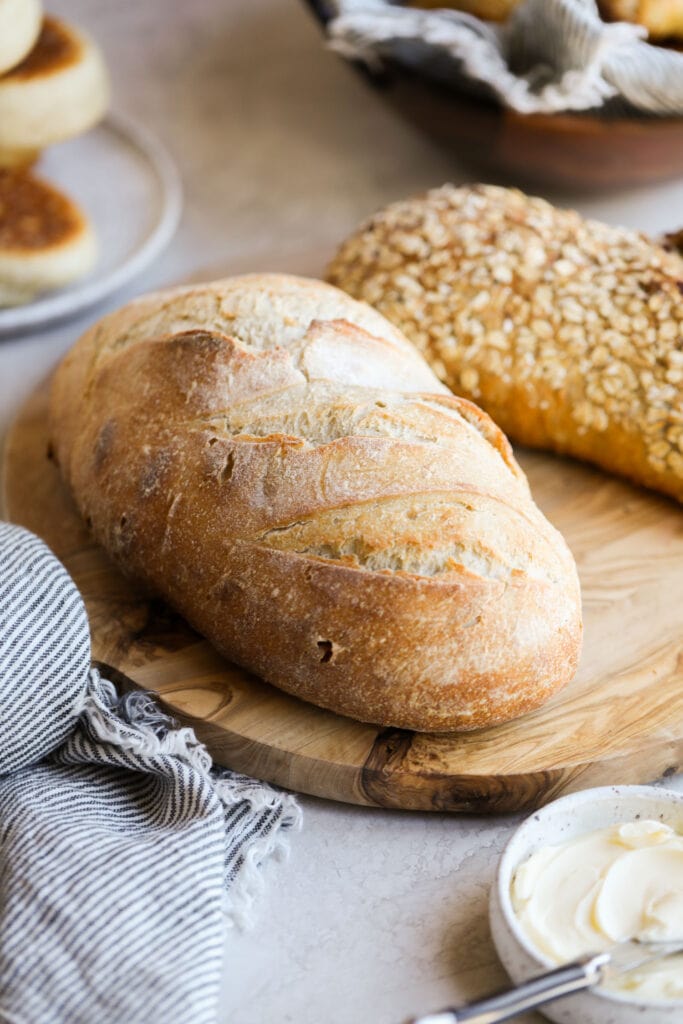
Want to save this page?
Enter your email below & we’ll send it straight to your inbox. Plus you’ll get great new recipes from us every week!
Sourdough Nutrition Facts
Homemade and store-bought sourdough bread will have slightly different nutritional profiles. But typically, a standard-size (1.75 to 2 ounces or 40-45 grams) slice of sourdough bread contains:
- 90-100 calories
- 0 g total fat
- 2-3 g protein
- 20-22 g carbohydrate
- 0-1 g fiber
- 0 g sugars
- 170-200 mg sodium
- 0 mg cholesterol
Sourdough bread also contains small to trace amounts of several micronutrients, including iron, magnesium, folate, zinc, thiamin, potassium, and calcium, as well as antioxidants and beneficial microbes.
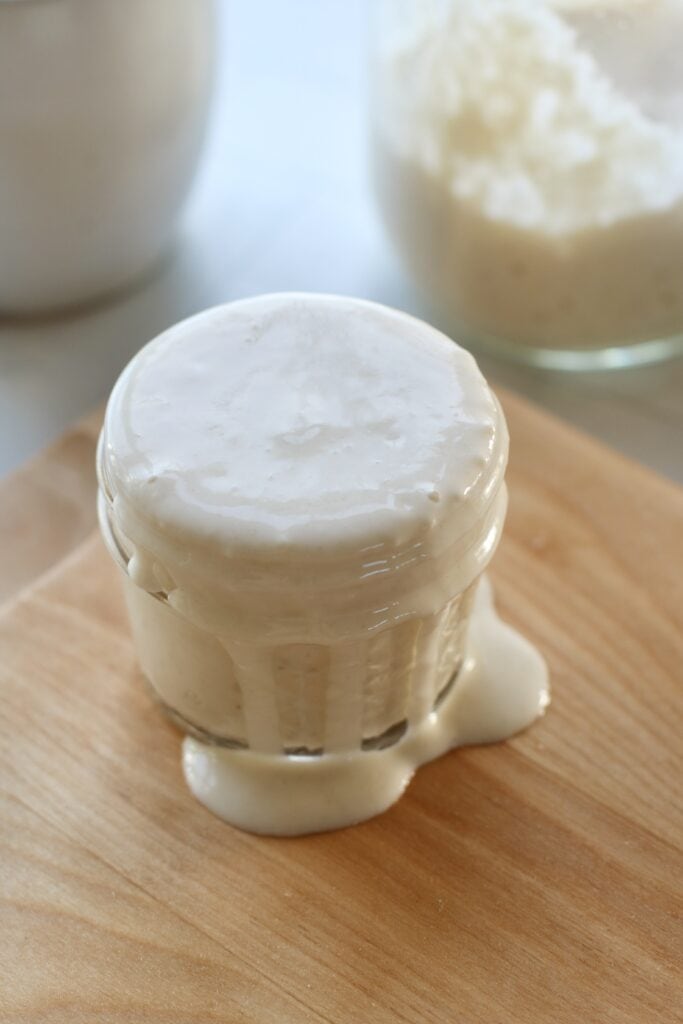
Health Benefits of Sourdough Bread
Here’s what the science has to say about the health benefits connected to sourdough bread products:
- Easier to digest: Because of the fermentation process, the gluten in sourdough bread is more broken down and easier to digest than the gluten in other types of bread. That’s why some people who have a gluten sensitivity, IBS, or a sensitivity to FODMAPs report being able to tolerate sourdough bread with no or fewer digestive ailments, such as bloating.
- Reduction in antinutrients: Antinutrients are compounds that interfere with the absorption of nutrients in a food. In grains (and flours used to make bread), the common antinutrient phytic acid (phytates) can block the absorption of minerals, such as iron, magnesium, zin, and calcium. The sourdough fermentation process leads to a reduction of antinutritive or inflammatory compounds in the dough.
- Lower blood sugar level increase: The glycemic index and glycemic load of sourdough bread is lower than other types of breads, and sourdough has been shown to require a lower insulin response in order to regulate blood sugar levels. This could be because of the ease of digestibility as well as a marked increase in resistant starches in sourdough.
- Contains prebiotics for gut health: Sourdough starter contains both probiotics and prebiotics. However, baked sourdough bread contains only prebiotics (meaning it’s not technically a fermented food). Prebiotics are food or compounds in food that are beneficial to the gut microbiome. One of the potential prebiotics released by lactic acid bacteria in sourdough starters is beta-glucan, which boosts probiotic activity after digestion.
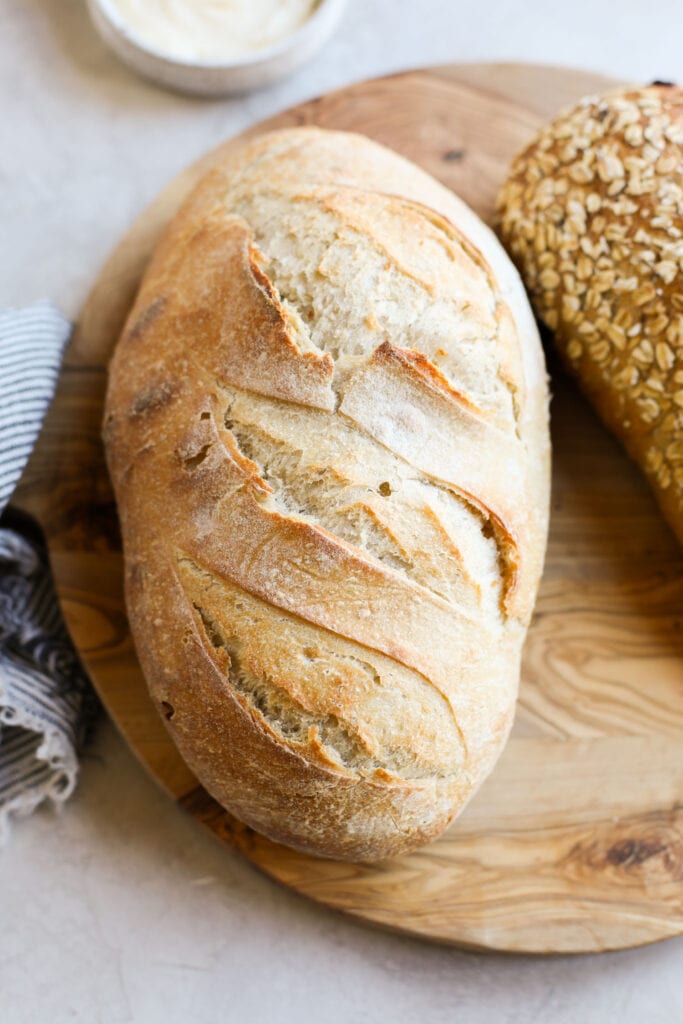
What Makes Sourdough Bread Different from Other Breads?
There are two main differences between sourdough and other types of bread:
- Sourdough has an enjoyable tangy (slightly sour) taste, hence the name
- It’s made through the process of fermentation
While all sourdough is fermented, not all fermented breads are sourdough. Other types of fermented leavened breads include rye bread, French bread, and baguettes. Of all types of fermented breads, sourdough is typically fermented the longest, which results in the tangy flavor and the additional breakdown of gluten.
Though there is no universally accepted definition of sourdough, it is most often distinguished by an increase in acetic acid and lactic acid bacteria in the dough.
Sourdough, in its most pure and simple form, contains only bread flour, water, salt, and a sourdough starter. The sourdough starter is made from flour and warm water that ferments into a bubbly wet substance that is needed in order for sourdough bread to rise (called leavening).
Other ingredients that are sometimes used when making sourdough at home include olive oil, different types of flour, seasonings, and mix-ins, such as dried fruit, nuts, and seeds.
Mass-produced sourdough bread is sometimes called “sourfaux” because people don’t consider it to be as authentic as homemade sourdough bread. It is typically made with a quicker fermentation process (just 24 hours or less) and often includes additives like:
- Commercial baker’s yeasts (a dry powder vs the wet wild yeast substance that is sourdough starter)
- Vinegar
- Phytic acid that speeds up the sourdough fermentation process
- Oils, flavors, and preservatives (for consistent texture, taste, and longevity)
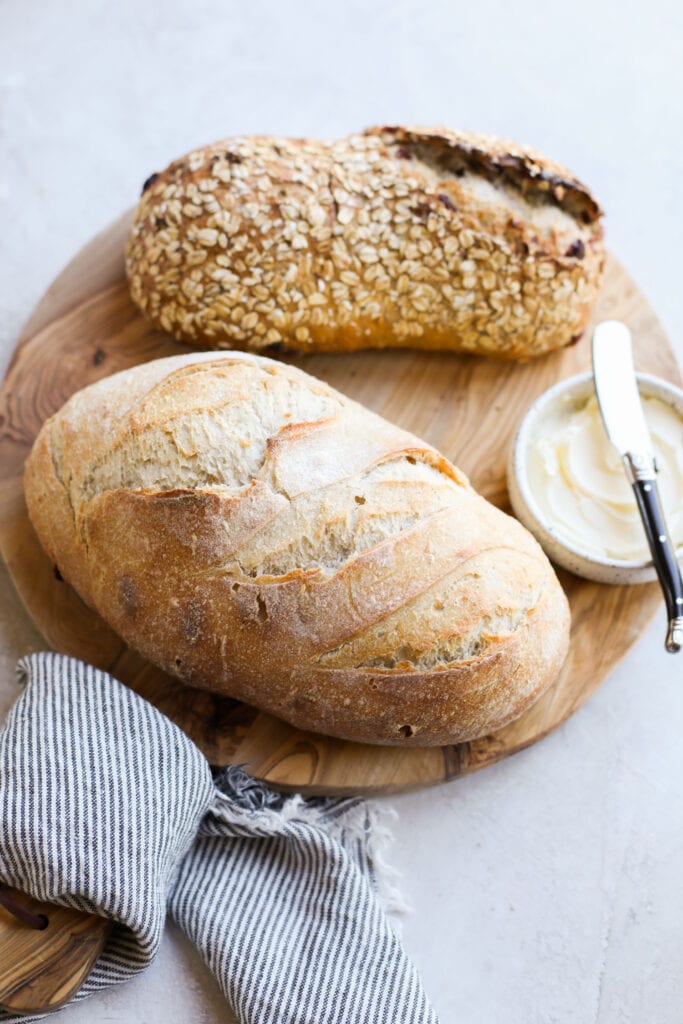
Should You Make or Buy Sourdough?
There are many ways to get sourdough bread: make it from scratch or with a sourdough kit, get a subscription box of frozen bakery sourdough, or buy it at the grocery store. Let’s explore the pros and cons of each option.
Option 1: Make Sourdough From Scratch
If you have bread flour, warm water, salt, time, and patience, then you can make your own sourdough at home. The process starts by making a sourdough starter, which is a bubbly wet wild yeast that grows Lactobacillus bacteria, a beneficial probiotic, as it ferments over several days.
- Pros: You get sourdough in its most natural form, get to experience food science at home, and reap the most health benefits that sourdough provides
- Cons: Takes time and the most effort, since you are hands-on in the bread-making process.
Option 2: Use A Sourdough Starter Kit
Making sourdough bread at home can be intimidating, especially if it’s your first time. Having a kit that contains everything you need, plus step-by-step instructions, can provide some assurance.
- Pros: Get everything you need (except for the flour and water) to make sourdough bread at home in one convenient kit, which is great for beginners and also a fun gift for curious foodies. Our team of dietitians loves the Artisan Sourdough Starter Kit from Cultures For Health.
- Cons: If you already own some of the items in the kit (such as a dough scraper or food scale), then you may not be able to justify the cost of the kit.
Option 3: Buy Delivery Frozen Sourdough Bread
Did you know that you can order a subscription box of sourdough bread and other artisan bakery goods that you freeze until you’re ready for a fresh-from-the-oven warm loaf? Our dietitians have been paying members of Wildgrain for 3 years now (read our full review of this sourdough subscription service).
- Pros: Get fresh and warm sourdough bread in just 20 minutes. Delivery schedules are flexible and can be paused at any time. With Wildgrain, every purchase supports small bakeries and donations to food banks, and free and seasonal items are available in every box.
- Cons: The convenience of a quality subscription service can be costly.
Option 4: Buy Bakery Or Store-Bought Sourdough Bread
You can also purchase sourdough bread from a local bakery or as boules at the grocery store bakery section or sliced bread on the inner aisles. For the most health benefits, check labels and seek out the freshest and most simply made sourdough bread.
- Pros: You can usually find good quality, freshly made sourdough bread at a local bakery, which also supports your local economy.
- Cons: Not all mass-produced sourdough breads are created equally. Some contain unwanted additives that diminish the full health benefits of sourdough.
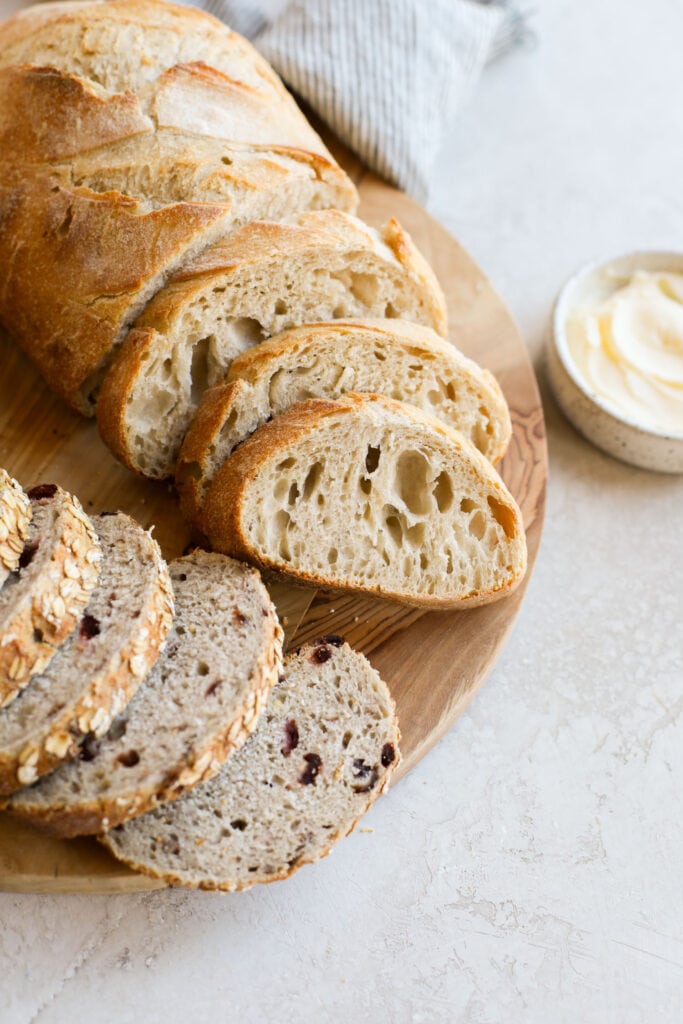
Potential Drawbacks
Even though the gluten in sourdough bread is easier for people to digest, including some people with digestive symptoms such as IBS and gluten sensitivity, it still contains gluten. Therefore, sourdough bread is not a safe choice for people with celiac disease or a wheat allergy, and it is not an ideal choice for people who are eating gluten-free or avoid wheat for any other reason.
Also, though sourdough bread does offer many benefits, it does not contain as much fiber as most whole-grain breads. Whole-grain sourdough bread does have more fiber and isn’t much harder to make at home, but you’re unlikely to find it at the store.
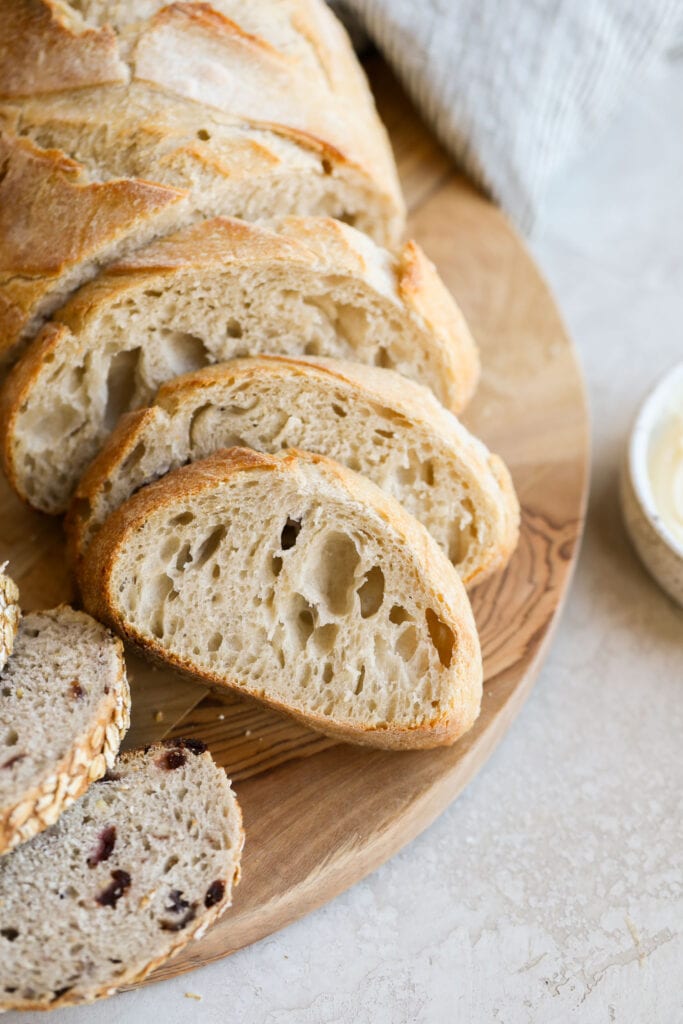
Is sourdough healthier than regular bread?
Does sourdough bread have probiotics?
Although baked sourdough bread may not contain probiotics since they are likely not able to survive the high heat of the baking process, it does still contain prebiotics, which are also vital for proper digestion and gut health.
Is sourdough bread good for weight loss?
It is easier to digest than other breads and does offer some gut health benefits due to its small prebiotic content and lactic acid content, so it could contribute to a healthy diet where a healthy gut microbiome is prioritized as one component of weight loss.
Does sourdough bread cause blood sugar spikes in people with diabetes?
According to a 2019 review, sourdough bread has a lower glycemic index and glycemic load than white flour bread and whole-wheat bread that is not fermented. Whole-wheat sourdough is higher in fiber, which additionally lowers the strain it puts on your blood glucose. Avoiding drastic blood sugar spikes is an important aspect of good diabetes management in an effort to avoid highly fluctuating insulin levels.
For ultimate success, we highly recommend reading the tips in the full blog post above. All photos and content are copyright protected. Please do not use our photos without prior written permission. If you wish to republish a recipe, please rewrite the recipe in your own unique words. Link back to the source recipe here on The Real Food Dietitians. Thank you!
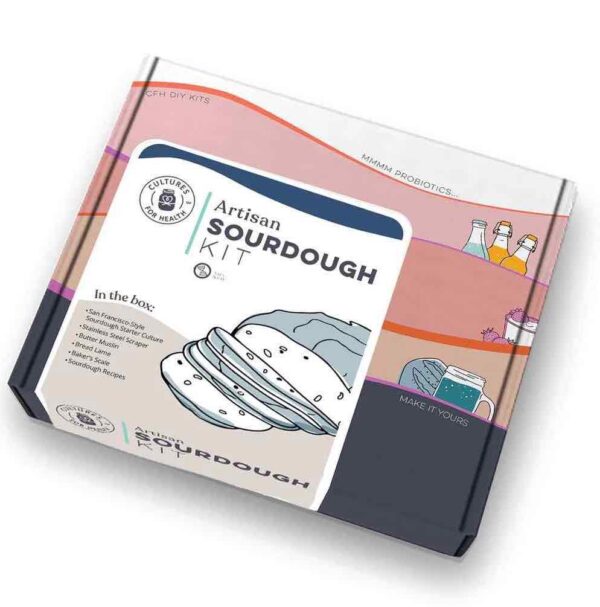
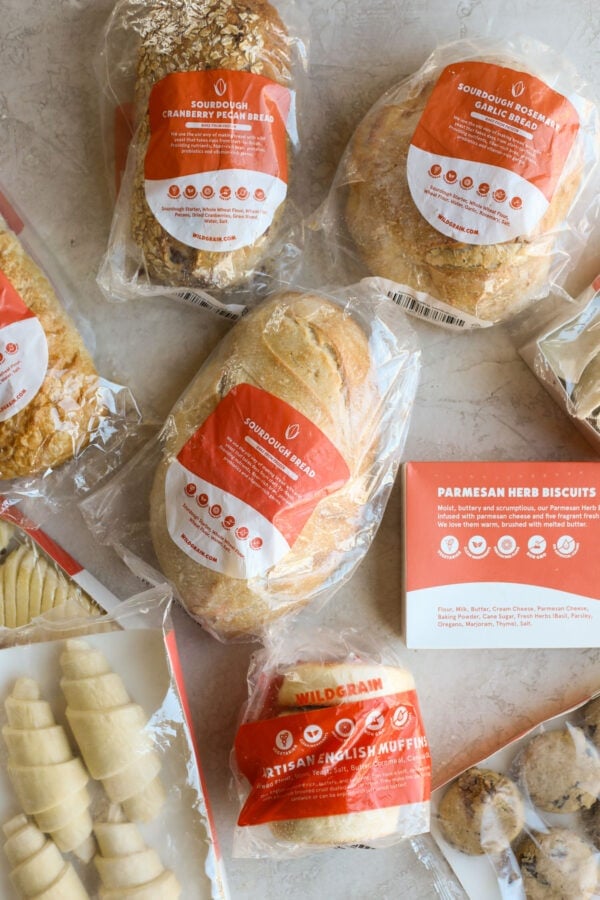

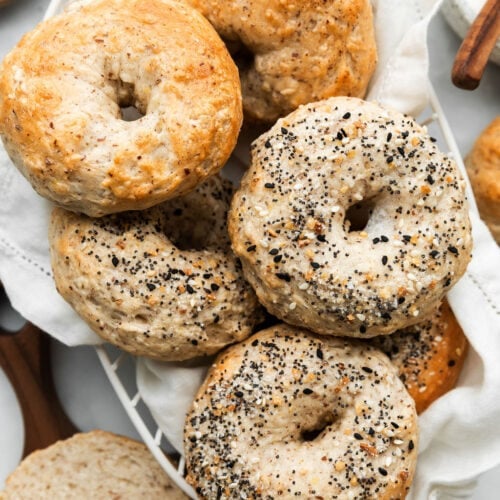
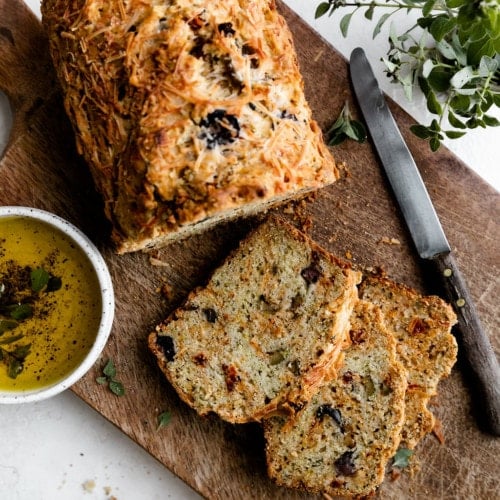
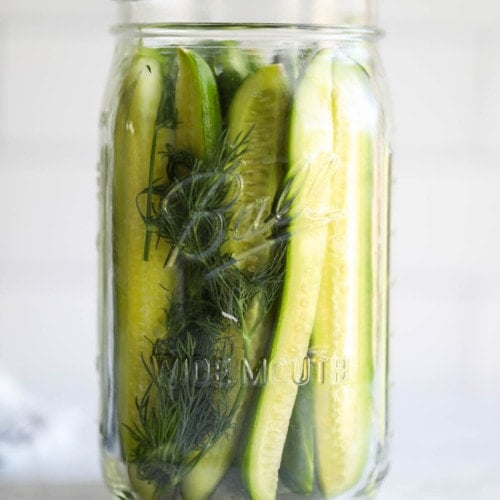
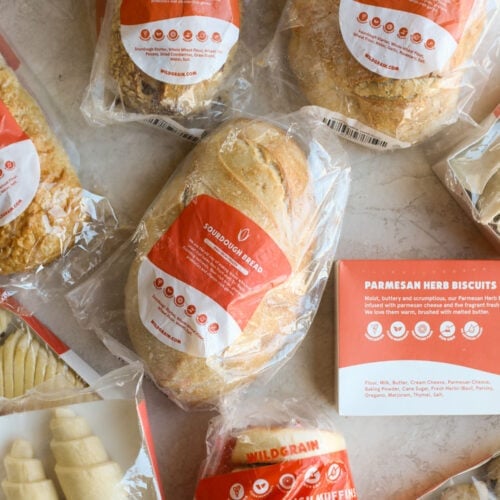

Does making your own starter with packaged yeast have the same benefits as doing it by waiting for natural airborne yeasts? I’ve tried multiple times to do it the natural way and always get pink slime. I’ve been successful with the jump-start method keeping my starter active for a few months, but want the prebiotics. Should I order a starter instead?
Yes, you would get some probiotic benefit from using a packaged yeast, though I’m thinkin the strains would be stronger in a start designed just for sourdough. Let us know if you try it!